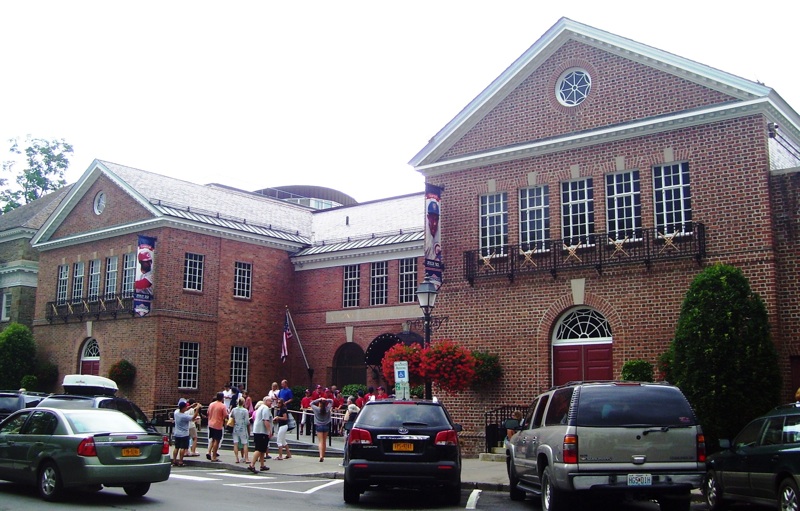The Hall of Fame is Just Making it Worse
Aug 6, 2014 by Adam Darowski
The day before last week’s feel-good induction ceremony of a half dozen new Hall of Famers, the Hall of Fame dropped a bombshell regarding future candidates. The announcement had many—particularly the sabermetric community—confused and frustrated.
The actual rule change isn't a bad one. Rather than getting 15 chances at BBWAA election, candidates will now receive 10 chances. The issue is how the rule was implemented. The change is effective immediately, save for three players who are already beyond their tenth year (Don Mattingly, Alan Trammell, and Lee Smith will all receive the full 15 tries). Because only three players were grandfathered in, this means that Smith, currently in his 13th year of eligibility, now has as many attempts remaining as Tim Raines, who is only in his eighth year. In fact, the change can only be described as devastating to the cases of Raines and other deserving candidates who have been victims of the Hall of Fame's historic logjam.
This logjam exists not only because of the presence of players on the ballot who are suspected of performance-enhancing drugs, but also because it is a lot harder to get into the Hall of Fame than it used to be. Bert Blyleven was inducted on his 14th try, one of several players to be inducted between year ten and year fifteen. Meanwhile, Alan Trammell is in his 14th year and is highly unlikely to gain induction through the BBWAA.
Players of Blyleven and Trammell's caliber simply shouldn't still be on the ballot after 14 years. Through both traditional and advanced statistics, they appear to be easy choices for Cooperstown. The only eligible non-Hall of Fame pitchers with more wins than Blyleven’s 287 are Roger Clemens (who, of course, is only out because of association with PEDs), 19th century pitcher Bobby Mathews, and Tommy John. Clemens is the only one ahead of Blyleven’s 3,701 strikeouts while no eligible pitchers outside the Hall of Fame can match Blyleven’s 60 shutouts or combination of 118 ERA+ (ERA adjusted for park and era) and 4,970 innings pitched. Using advanced metrics, Blyleven is an all-time great—he ranks eleventh all time in Baseball-Reference’s pitching Wins Above Replacement and eleventh among pitchers by Hall Rating. While Blyleven was eventually inducted, he should have been a first-ballot selection.
Likewise, no shortstop with 2,000 or more hits and 180 or more homers (Trammell had 2,365 and 185) struggled to gain induction to Cooperstown. In fact, the only shortstops to hit the ballot with those numbers are Ernie Banks (elected in his first ballot), Robin Yount (first), Cal Ripken Jr. (first), and Barry Larkin (third). There’s not a lot that differentiates Larkin from Trammell, but Larkin was inducted fairly quickly while Trammell’s case will instead go to the Veterans Committee.
The upside to this is that Trammell may quickly gain induction via the Veterans Committee. The BBWAA seems to struggle with the fact that Trammell’s numbers look relatively modest when compared to steroid era candidates—which is curious, given the BBWAA’s dismissal of most steroid era candidates. But I’m willing to bet that Trammell’s peers understand how good he really was. By Hall Rating, Trammell ranks ahead of about 70% of players currently in Cooperstown.
This rule change would have been a good one if it was accompanied by other changes—specifically, the removal of the maximum of ten votes per ballot. By Hall Rating, 18 players on the 2014 ballot were considered Hall-worthy. Many BBWAA members, such as Buster Olney of ESPN, wished they could have voted for more than ten and lamented the fact that they needed to leave candidates like Raines and Mike Mussina off the ballot—candidates they felt absolutely belonged in Cooperstown but simply couldn't fit on the ballot.
For players like Raines and Mussina—not to mention Edgar Martinez, Mike Piazza, Curt Schilling, and others—this change puts their eventual induction in serious jeopardy. The crowded ballots and voting limits meant it might take ten to fifteen years to even fit on 75% of ballots. Now, if these candidates aren’t inducted by year ten, they're simply out of luck.